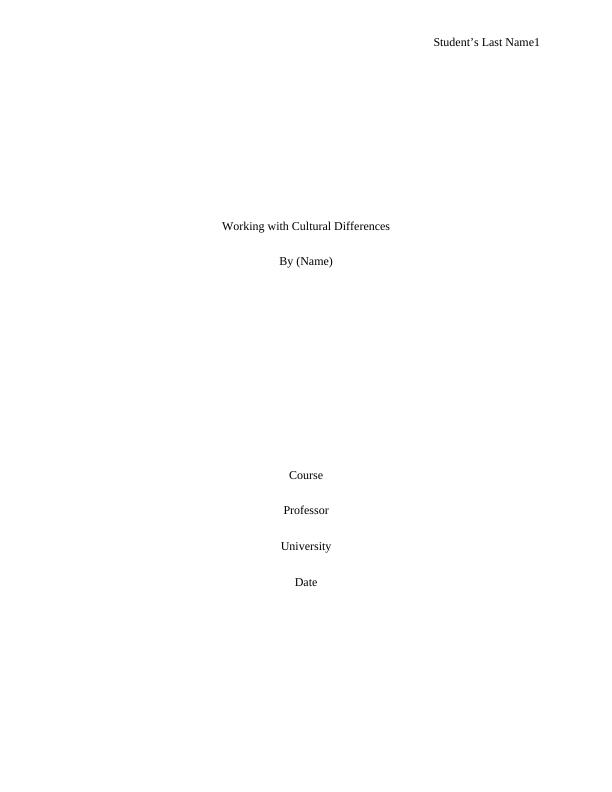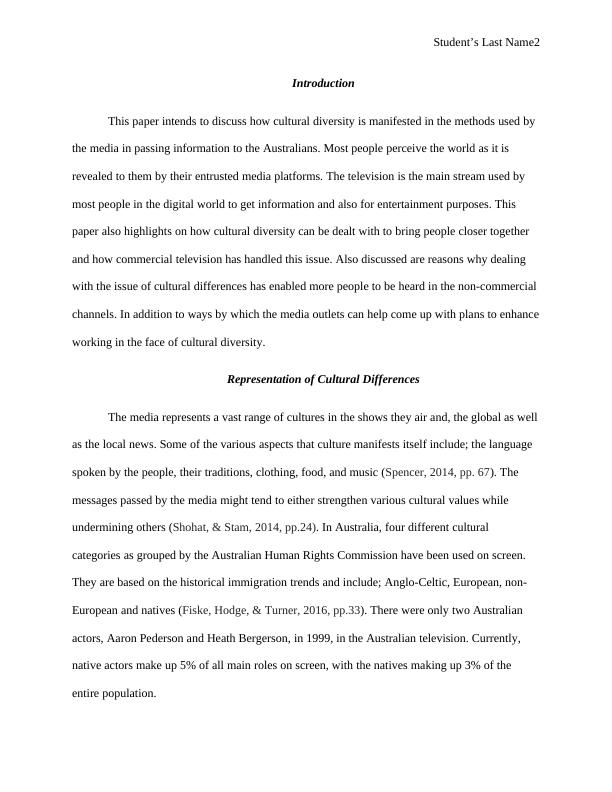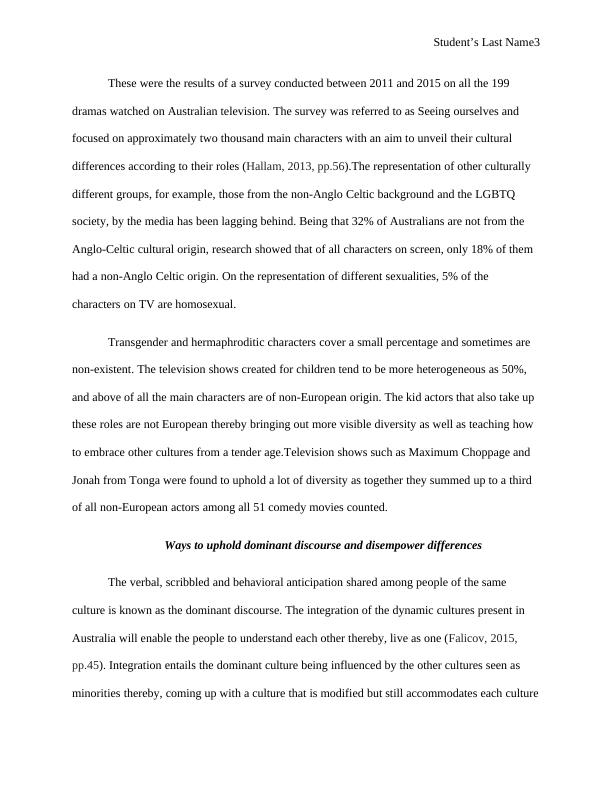Ask a question from expert
Working with Cultural Differences | Assignment
9 Pages2056 Words212 Views
Added on 2019-11-19
Working with Cultural Differences | Assignment
Added on 2019-11-19
BookmarkShareRelated Documents
End of preview
Want to access all the pages? Upload your documents or become a member.
Working with Cultural Differences
|7
|2056
|50
Deborah Mailman: A Successful Indigenous Actor in Australia
|7
|1599
|219
Indigenous Groups in Australia and Their Historical Trauma
|5
|796
|111
E. Pauline Johnson’s - Case Study
|5
|992
|213
Assignment on Study Tour in USA
|10
|2622
|77
Contemporary Issues in Media Representation: Critical Analysis of Get Out
|8
|2047
|190


